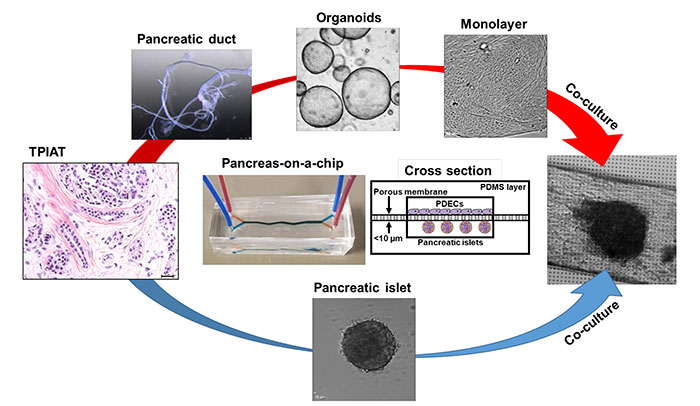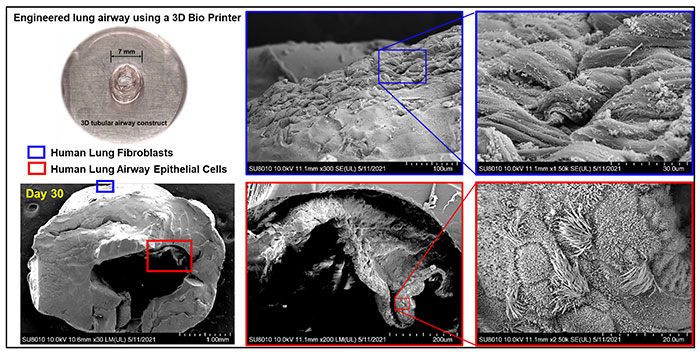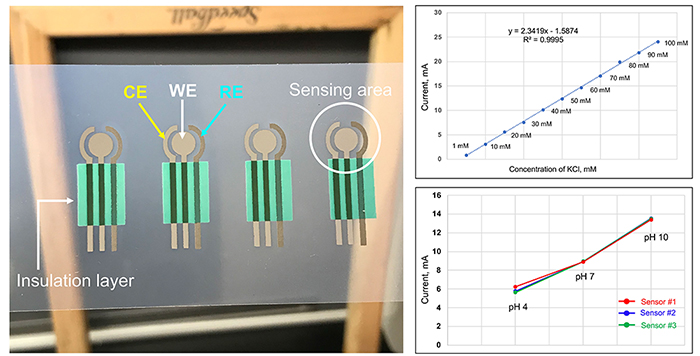Research Areas
Organ-on-a-Chip
Organ-on-a-chip is a microfluidic-based 3D cell culture model that can be fabricated through photolithography and soft lithography techniques. The Mun Lab has all the required equipment, including a 3D printer, and has been designing and fabricating novel organs-on-chips in-house. Organ-on-a-chip is transparent, portable and can be connected to a peristaltic pump to perfuse medium or drugs in an automatic manner. The Mun Lab has successfully developed a pancreas-on-a-chip composed of two cell culture chambers separated by a thin layer of porous membrane. With the pancreas-on-a-chip, his group successfully co-cultured patient-derived pancreatic ductal epithelial cells (PDECs) and islets mimicking in vivo structure, and observed how defective cystic fibrosis transmembrane conductance regulator (CFTR) function in the PDECs affects reduced insulin secretion from the islets. This finding showed that there was cell-cell communication between PDECs and islets in regulation of insulin secretion in islets, which will help to investigate further the pathogenesis of diabetes in CF patients.

3D Bioprinting
3D bioprinting is an emerging technology in the last decade that allows researchers to culture living cells on 3D scaffolds that mimic human organs. The Mun Lab has successfully developed a patient-derived human lung airway—composed of lung fibroblasts with complex networks and proximal airway epithelial cells that are fully differentiated into ciliary cells and goblet cells lining the luminal surface of a 3D scaffold. Bioengineered 3D human organs could be useful not only to monitor cell function, cell-cell interaction and ciliary beat frequency, but also to screen drugs and test drug toxicity for drug discovery.

Biosensors
Cystic fibrosis is a progressive, fatal genetic disorder that is caused by mutations in the cystic fibrosis transmembrane conductance regulator (CFTR), which is a chloride and bicarbonate transport channel. The Mun Lab has generated protocols to isolate and culture patient-derived primary cells; including lung airway epithelial cells, lung submucosal epithelial cells, intestinal epithelial cells and pancreatic ductal epithelial cells, as well as protocols to monitor CFTR function using a short-circuit current assay, swelling assay and iodide efflux assay. Recently, the Mun Lab has also focused on developing biosensors (i.e., pH and chloride) using a screenprinting technique that helps to monitor CFTR function in real time. Biosensors are powerful tools that convert chemical, physical or biological reactions in cells rapidly into electrical signal output that can be monitored in real time.

Contact the Mun Lab
127 S. San Vicente Blvd.
Pavilion, Suite 9200
Los Angeles, CA 90048
